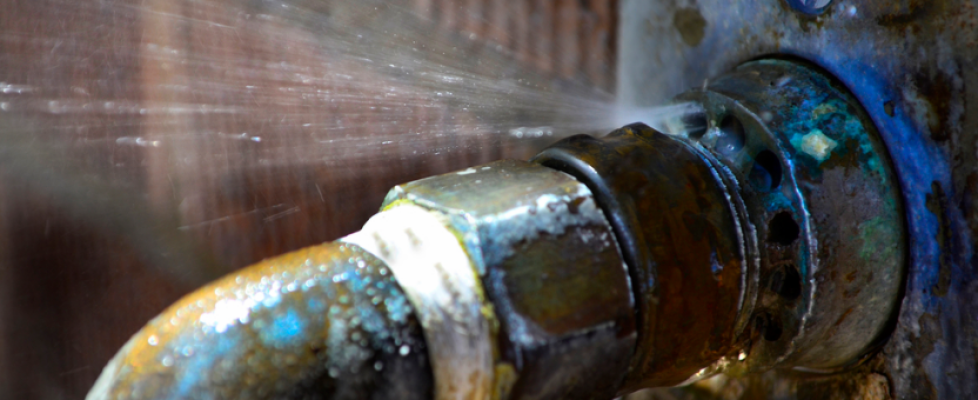Assess Your Pipes Before Catastrophe Strikes: A Comprehensive Guide
Leaking pipes are not only a financial burden but also a potential source of severe damage to your home. Hidden plumbing problems can wreak havoc behind walls, damaging your property and belongings without you noticing until it’s too late. Routine pipe assessments are vital for identifying these issues early and avoiding costly repairs. Let’s dive into how to evaluate your plumbing system and keep your home safe from water damage.
Why Assessing Your Pipes Matters
Your plumbing system is a critical part of your home’s infrastructure. Over time, pipes wear down due to age, corrosion, or defective materials, leading to leaks and other issues. Regular inspections help:
- Prevent costly water damage by addressing issues before they escalate.
- Ensure water quality for drinking, cooking, and bathing.
- Maintain efficient water flow and pressure.
- Prolong the lifespan of your plumbing system.
Whether you’re dealing with a slow drain or an aging water supply system, assessing your pipes regularly can save you time, money, and stress.
Key Plumbing Systems to Inspect
1. Drain, Waste, and Vent (DWV) Systems
The DWV system is responsible for removing sewage and greywater from your home. A well-functioning system ensures proper waste flow and prevents backflows or blockages. However, older homes are particularly susceptible to DWV system failures due to corrosion.
Signs of DWV System Issues:
- Slow drainage: Water pooling in sinks or tubs signals buildup in the pipes.
- Persistent odors: Foul smells from drains may indicate trapped waste or gas leaks.
- Backups: Water coming back up through drains is a major red flag.
If your home is over 20 years old, it’s wise to schedule a camera inspection to check for cracks, blockages, or other damage in your DWV system.
2. Domestic Water Supply System
The water supply system delivers clean water to your fixtures. Aging pipes or outdated materials can compromise water quality and efficiency, making regular inspections critical.
What to Look For:
- High-zinc brass fittings: Found in some PEX systems, these fittings are prone to dezincification, which weakens the pipes and causes leaks.
- Copper and galvanized pipes: These are durable but susceptible to corrosion, especially in homes over 25 years old. Signs of corrosion include:
- Rust-colored or metallic-tasting water
- Low water pressure
- Frequent leaks
- Polybutylene pipes: Common in homes built between 1978 and 1995, these pipes degrade when exposed to chlorine, often failing without warning.
If you notice any of these issues, replacing problematic materials with modern, durable options can prevent future disasters.
3. Closed-Loop Hydronic Systems
Hydronic systems circulate hot or cold water through pipes to regulate indoor temperatures. These systems are efficient but require regular maintenance to avoid leaks and energy loss.
Common Problems:
- Damaged insulation: Over time, insulation around pipes can degrade due to moisture, reducing efficiency and causing pipes to corrode.
- Corrosion: Condensation buildup leads to external pipe corrosion, especially in poorly insulated systems.
Inspect your hydronic system annually, paying close attention to insulation and pipe condition. If insulation is damp or missing, consult a professional for repairs.
Steps for Assessing Your Pipes
1. Conduct a Visual Inspection
Start by examining exposed pipes for visible signs of damage, such as:
- Rust or discoloration
- Cracks or pinhole leaks
- Damp spots on walls or ceilings near pipes
2. Test Water Pressure
Low water pressure can indicate blockages, leaks, or pipe corrosion. Use a water pressure gauge to check if your system is operating within the standard range (40-60 psi).
3. Look for Unusual Noises
Banging or rattling sounds in your pipes may suggest airlocks, loose fittings, or water hammer issues. These should be addressed promptly to prevent further damage.
4. Check for Leaks
Even small leaks can lead to significant problems. Monitor your water meter when all fixtures are off—if it continues to move, you likely have a leak.
5. Schedule a Professional Inspection
While DIY checks are helpful, a professional plumber can use advanced tools like video cameras and thermal imaging to identify hidden issues.
When to Replace Your Pipes
1. Age of Your Plumbing System
Most pipes have a lifespan of 20-50 years, depending on the material:
- Copper pipes: 50+ years
- Galvanized steel: 20-50 years
- PEX: 40 years
If your home’s plumbing system is approaching the end of its expected lifespan, consider proactive replacement.
2. Frequent Repairs
If you’re constantly fixing leaks or clogs, replacing old pipes may be more cost-effective than ongoing repairs.
3. Water Quality Issues
Rusty or discolored water, unpleasant odors, or sediment buildup are signs that your pipes are deteriorating and need attention.
Preventative Measures to Protect Your Pipes
- Insulate Pipes: Especially in colder climates, insulation prevents freezing and bursting.
- Avoid Harsh Chemicals: Chemical drain cleaners can corrode pipes over time. Use natural alternatives or consult a plumber for tough clogs.
- Maintain Proper Water Pressure: High pressure stresses your pipes. Install a pressure regulator if necessary.
- Schedule Annual Inspections: Professional evaluations catch problems early, extending the life of your plumbing system.
How Super Brothers Can Help
At Super Brothers, we specialize in comprehensive plumbing inspections and repairs. Our team uses state-of-the-art technology to assess your pipes, identify potential issues, and recommend cost-effective solutions. Whether you need a camera inspection for your DWV system or a complete pipe replacement, we’ve got you covered.
Don’t wait for a plumbing disaster to strike – schedule your pipe assessment with Super Brothers today. Together, we’ll ensure your home’s plumbing system remains safe, efficient, and worry-free.
By staying proactive, you can avoid costly repairs, protect your property, and enjoy peace of mind knowing your plumbing system is in top shape. Contact Super Brothers now to get started!


